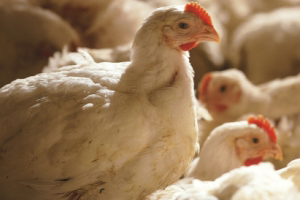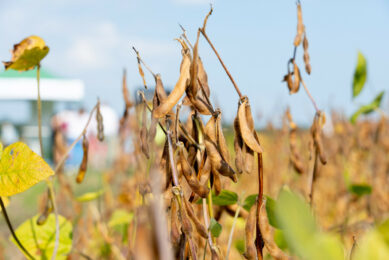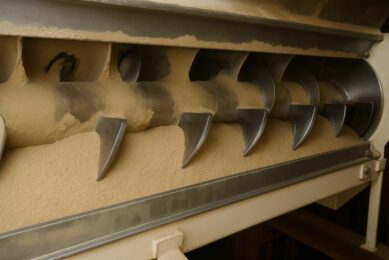Organic acids: Are they worth considering?

Animal feeds are routinely subjected to contamination from diverse sources, including environmental pollution and activities of micro-organisms. Dietary acidification with organic acids has been shown to contribute to environmental hygiene by preventing feed and raw materials from microbial and fungal deterioration.
By Dr Renata Urbaityte, Director Competence Center, Biomin, Austria
Acidifiers have gained considerable attention in modern animal production and have been proven to be an efficient alternative to antibiotics. Nowadays the incorporation of organic acids in the feed and in feeding programmes for poultry, swine and aquaculture has become a common practice. Sometimes seen as commodity products, organic acids have versatile actions. In dissociated forms, organic acids decrease the pH of the environment, whereas in undissociated forms they work against micro-organisms such as E. coli, Salmonella ssp. and Campylobacter. Moreover, organic acids activate enzymes, serve as energy source for the gastrointestinal tract, help the chelation of minerals and stimulate intermediary metabolism.
The prevention of disease transmission and enhancement of animal growth and feed efficiency are critical factors. When pathogenic bacteria contaminate feed, they become a potential route for the transmission of diseases to animal and the human population, which is of a great concern for producers and consumers. The microbiota in feed materials come from a variety of ecological niches e.g. soil and the animals’ gastrointestinal tract. Feed materials may be inoculated at any time during growing, harvesting, processing and storage. It is known that microfloral growth is dependent on the moisture, pH value and composition of feed. While temperature, pH and several other factors can influence whether micro-organisms will grow in feed, water activity may be the key factor in controlling the spoilage. By measuring water, it is possible to predict which micro-organisms will be potential sources of spoilage.
Water activity
Water activity (aw) is one of the most critical factors for determining the quality and safety of feed. It quantifies the amount of “free” water available in materials for use by micro-organisms and chemical agents. Water activity determines the lower limit of available water for microbial growth as each micro-organism has a characteristic minimum aw requirement for growth. An aw of at least 0.75 is required for bacterial growth; however, the vast majority of spoilage bacteria will grow at 0.90. The practical limit for growth of yeast is 0.88 and for moulds 0.70. The ultimate limit for all microbial growth is 0.60. However, some micro-organisms have adapted to the conditions without water and can actively grow in stored feed. Some authors reported that grains and oilseed crops possess diverse microbiota that are highly resistant to low moisture conditions, with populations ranging from 5×103 to 1.6×108 colony-forming units (CFU)/g.
Feed hygiene
There are different ways to improve feed hygiene e.g. rapid drying or thermal treatment. Heat treatment, usually during conditioning, pelleting or extrusion has been demonstrated to be an effective way to reduce microbial loads in feed. Reduction of the bacterial contamination in feed by heat is dependent on the temperature and treatment time; nevertheless, the so-called “sterility” of feed cannot be achieved.
Moreover, these methods do not prevent a recontamination of feed, which is a hazard in the feed production chain. Especially in the finished product sector, the cooling area for pellets, bulk transport to the farm and storage of the feed in farm silos must be taken into account in maintaining the hygienic status of finished compound feeds. The orientation values of mesophilic bacteria, including Pesudomonas and Enterobacteriaceae in swine and poultry compound feed (Table 1).
There are multiple steps to secure the hygienic status of feed, e.g. thermal treatment and addition of compounds to control micro-organisms in feed. The addition of organic acids appears to contribute to environmental hygiene by preventing raw materials and compound feed from microbial and fungal deterioration.
Organic acids
Supplementation of organic acids in compound feed tends to decrease the feed pH, buffer capacity and prevent the growth of undesirable microbes. The bacteriostatic activity is thought to derive from the penetration into bacterial cell and their dissociation there. After penetrating the bacteria cell wall, the non-dissociated form will be exposed to the internal pH of the bacteria and dissociate, releasing protons (H+) and anions (A-). The internal pH of bacteria will decrease and because the bacteria cannot tolerate a large spread between the internal and external pH, a specific mechanism (H+ -ATPase pump) will act to bring the pH inside of the bacteria to normal.
This phenomenon consumes energy and can eventually stop the growth of bacteria or even kill. The anion part of the acid is trapped inside bacteria because it will diffuse freely through the cell wall only in its non-dissociated form. The accumulation of anion- becomes toxic for the bacteria.
The constant treatment with organic acids has a residual protective effect in feed. It helps to reduce recontamination of the feed risk and to minimise the contamination of milling and feeding equipment. However, the specific inhibiting effect of acid on bacteria, yeast and mould has to be considered when recommendations for feed supplementation are made. According to various literature sources, the efficacy of the product depends on:
1) The type and dose of supplemented acid,
2) The type of feed and its buffer capacity,
3) Hygiene standards in the feed mills,
4) Feed processing method.
The high protein and mineral contents of feed ensure rapid animal growth but generates high buffering capacity, thus reducing levels of hydrochloric acid (HCl). This impairs the digestion of protein and stimulates the proliferation of potentially harmful bacteria at raised pH values. Reduced digestion of feed may lead to fermentation in the hind gut, diarrhoea and rapid colonisation of gastrointestinal tract with pathogens.
Buffering capacity
Diet buffering capacity is one of main factors affecting the response to acidifiers. By definition, the buffering capacity (B-value) is the change in the pH value of a defined volume or mass after the addition of a strong acid.
A more practical definition in the feed industry is that the B-value is the amount of 1 M hydrochloric acid (HCl) solution which needs to be added to a 10% slurry of feed or a feed ingredient in 100 ml of water in order to obtain a pH-value of 5, in some cases a pH value of 4 or 3. This definition is the reason why we find different values for the same expression in practical applications. The acid-binding capacity is the lowest in cereals and cereal by-products, intermediate or high in protein feedstuffs and very high in minerals, such as limestone and sodium bicarbonate. Most individual organic acids such as formic, propionic, fumaric, acetic and lactic acids have negative B-values. The general recommendation of B–value (ml of HCl) for pigs: pre-starter 0-5, starter 5-10, grower 10-20; poultry phase I 0-10, phase II 10-20. The B-value of diets can be reduced by consciously selecting feed ingredients with lower B-values and adjusting protein and mineral levels. Lowering dietary buffering capacity, via acidification with organic acids, has been shown to inhibit the luminal growth of bacteria and to enhance animal performance. Organic acids can lower the B-value of the diet without reducing protein or mineral content. The results of an in vitro study showed that an acidifier consisting of a blend of formic and propionic acids (Biotronic SE forte) at an inclusion level of 0.3% decreased B-values in starter and grower pig diets by 16 and 17%, respectively (Table 2).
Worth considering?
Acidifiers are powerful tools used to maintain animal health and improve performance, as well as to control feed and environmental hygiene.
Dietary acidifiers appear to be a possible alternative to feed antibiotics. Consistent beneficial effects on productivity in poultry, weaned pigs and aquaculture have been reported in scientific studies showing the decreased number of microbial counts in feed raw materials and compound feed, improved animal growth performance, and reduced diarrhoea, morbidity and mortality rates. In practice, livestock producers consider acidifiers to be a good solution for enhancing performance and, therefore, profitability.











